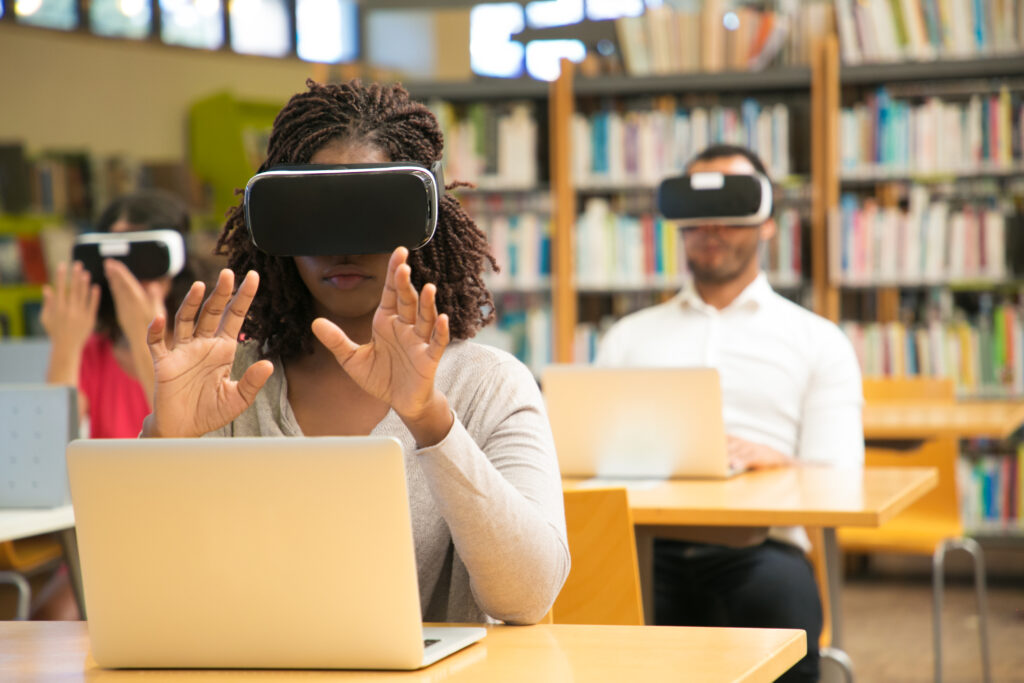In an ever-evolving digital landscape, navigating online learning is crucial for educators and presenters alike. Whether you’re hosting an online workshop or delivering a live presentation, effectively engaging your audience is key to ensuring their understanding and retention of key concepts. In this blog post, we’ll look at practical strategies for presenters to enhance audience engagement in the digital learning environment while also delving into the concept of “elaboration” and its importance for live presenters.
Understanding the digital learning landscape
As technology continues to advance at a rapid pace, the digital learning landscape is evolving. From virtual classrooms to interactive workshops and online courses, there are endless opportunities for learners to engage with content remotely. However, with this shift in online learning comes the challenge of keeping learners engaged and attentive in a virtual setting.
One key aspect is recognizing the importance of creating interactive and immersive experiences. Including elements such as gamification, VR, and simulations can enhance learner participation and retention in virtual environments. These interactive tools not only make learning more fun but provide opportunities for more hands-on practice and experiential learning. Multimedia content also caters well to different learning styles and preferences, making it more accessible and inclusive.
Key strategies for enhancing audience engagement
Interactive quizzes and polls: Incorporating interactive quizzes and polls into your presentation can encourage participation from your audience. Platforms like Mentimeter or Poll Everywhere allow presenters to create real-time quizzes and polls that engage learners and provide valuable feedback on their understanding of the material.
Visual aids and multimedia: Utilizing visual aids and multimedia such as videos, slideshows, and infographics, can help reinforce key concepts and keep audiences visually engaged. By incorporating relevant multimedia elements, these will complement your presentation and improve the learning experience.
Interactive Q&A: Hosting an interactive Q&A during your presentation will allow audience members to ask questions, seek clarification, and actively engage with the material. You should encourage participants to submit their questions via chat or a designated Q&A platform and address them in real-time to create a dynamic learning environment.
Breakout rooms and group activities: Breakout rooms and group activities allow audience members to collaborate with one another, share ideas, and apply their learning in a practical setting. We recommend dividing participants into smaller groups based on their learning objective, or interests, and provide activities or guided prompts to facilitate meaningful discussions.
Live demonstrations and case studies: Incorporating live demonstrations and case studies into your presentation provides tangible examples that illustrate key concepts and theories. Consider conducting live experiments or highlighting real-world examples to demonstrate the practical application of the material.

Elaboration techniques for live presenters
As well as engaging your audience through interactive activities and multimedia content, elaboration techniques can help reinforce learning and retention. This involves encouraging learners to elaborate on the material by connecting it to their existing experiences and knowledge.
By making the learning process more enjoyable and relatable, elaboration techniques can help reduce boredom and increase motivation, leading to improved learning outcomes overall.
Strategies for facilitating elaboration in real-time
Ask open-ended questions: Encourage participants to share their experiences, thoughts, and insights by asking open-ended questions that prompt them to elaborate on their understanding of the material based on their existing knowledge and experiences.
Use analogies and metaphors: Including analogies and metaphors can help your audience understand complex concepts by relating them to familiar experiences or ideas. Using relatable examples and memorable images can make abstract concepts feel more accessible.
Facilitate peer discussions: Encourage participants to engage in peer discussions and group activities that require them to elaborate on the material and share their insights with each other. You can provide discussion questions or structured prompts that help them to critically analyze the content and articulate their thoughts effectively.
Provide reflective prompts: Integrate reflective prompts into your presentation so that learners have the opportunity to pause and consider how the material applies to their own work environment or personal lives. By jotting down their thoughts or taking notes during these thoughtful moments, it will provide them with the opportunity to share their reflections with the group.
Conclusion
Navigating the digital learning landscape requires presenters to use innovative strategies that boost audience engagement and facilitate active learning. By incorporating interactive activities, multimedia content, and elaboration techniques into their presentations, presenters can create powerful learning experiences that capture audiences and foster learning outcomes. Adopt these strategies to transcend traditional classroom boundaries and elevate your next presentation for greater engagement and satisfaction.
We’d love to hear your thoughts on digital learning. What do you think are the biggest opportunities and challenges? Share your insights and questions with us via our Facebook or LinkedIn pages. If you’re looking for assistance in planning and executing your next event, don’t hesitate to get in contact with our team. We’re here to help turn your vision into reality and create unforgettable event experiences!
